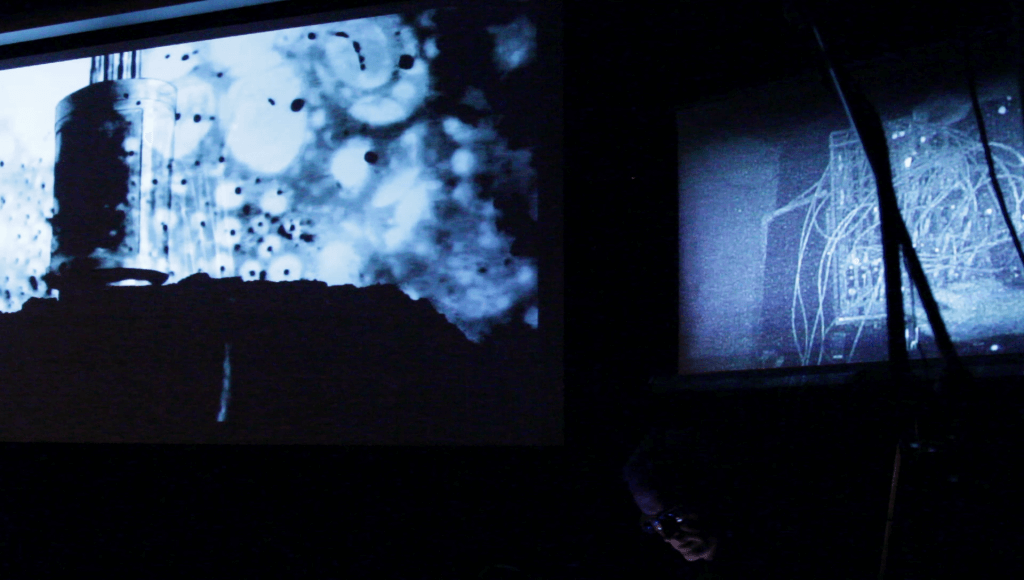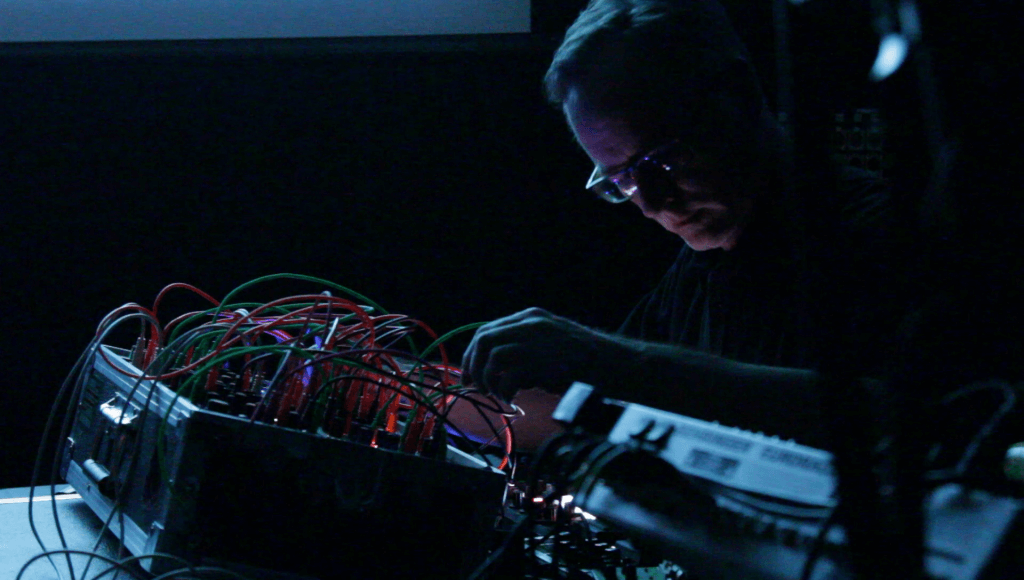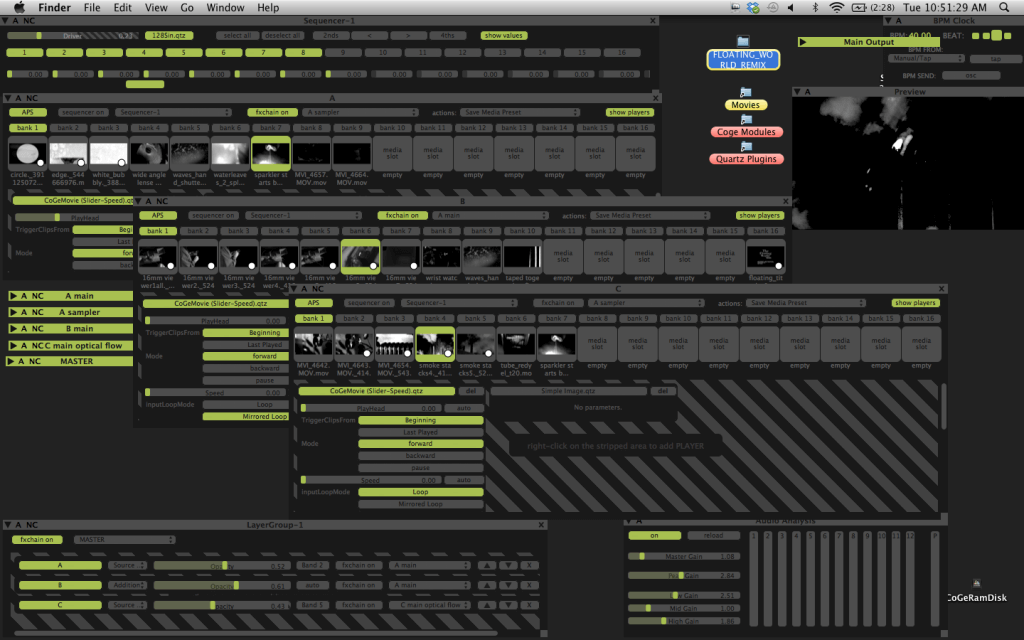It is the time to continue our project showcase series, this time with a live improvised remix in collaboration by Ian Campbell and Ernie Dulanowsky of Ian Campbell's sort film The Floating World (2012).

All of the visual elements of this improvised performance are derived from the original film; reordered, remixed, filtered and "played" in real time. The soundtrack of the original film was removed. All of the audio elements of the performance are improvised live by Ernie Dulanowsky using a variety of techniques including analog synthesis. Our goal is to create a live cinematic collaboration that allows space for give and take between sound and image.

Simplicity is the most important aspect of this piece currently. The setup has included two or three projections. First is the large cinema style screen that is plugged in to the Macbook Pro (2.2 Ghz i7 8Gb ram) running CoGe. We have used either one or two smaller screens on either side of the stage to show aspects of the production. For us it’s important to reveal as much of the production aspects of the show to the audience, to let them in to the secrets of our performance. Each small screen is run from a small cheap 9 volt security camera mounted on a mic stand above each performer’s workspace and plugged directly into a projector. It is certainly technically feasible to run the signal through CoGe and split it out to the various projectors, but we believe that would be overkill at this time so we opt for the simple solution.

Dulanowksy uses a variety of modules in a eurorack encolosure including; Harvestman Hertz Donut MkI (dual oscillator), 4ms Noise Swash (waveshaper/distortion), Harvestman Bionic lester (dual multimode filter), Make Noise QMMG (quad multimode filter/gate/VCA/mixer), WMD Multimode VCA (dual VCA/pan/x-fade), Snazzy FX Ardcore (Arduino based programmable control voltage and trigger source), Make Noise Wogglebug (random voltage/uncertainty source),4ms Atoner (lo-fi frequency shifter/bit reducer), Make Noise Maths (function generator/CV processor) x 2, Intellijel Planar (joystick controller/panner/vector mixer), Make Noise Rene (Cartesian sequencer). Audio outs are typically fed to various pedals, mostly delay pedals, then in to a mixer. Extensive use of audio analysis in Coge is used to synchronize some of the sound output with effects parameters. Rather then using a line input to the Macbook, we simply use the laptops built in microphone input to sample the sound in the performance space.

For control of CoGe a Korg nanokontrol is plugged in to the laptop and The CoGe patch is set up with 3 clipsynths (A,B,C) with one or two effect chains each. I use the CoGeMovie slider-speed player for all the playback of the clips and link each speed control to a slider on the Nanokontrol. Each layer has speed, opacity controls and there are controls for a Master effect that controls Brightness, contrast, XY position and scale. Most clips are 720p Mjpeg A encoded quicktimes. A rendering output is matched to 720p when possible. Most clips are desaturated, contrast enhanced (meant to mimic the high contrast of 16mm film) and audio is removed. I have a rough order for the clips to appear on screen, so I place the clips in the banks according to which should go with which thematically and with regards to contrast. As long as each clipsynth has the same bank loaded as each other I know I have the right clips to combine.

Ian Campbellis a Regina, Canada based filmmaker and new media artist whose work attempts to reveal the organic qualities of technology. His practice includes digital filmmaking, live improvised visuals, installation art, and kinetic sculpture.
Ernie Dulanowsky (Pulsewidth) is an electronic music performer from Regina, SK, Canada. His first brush with making electronic music came with building schematics in Popular Electronics twenty years ago. Ernie uses both homemade and commercial electronics to create ambient drone and noise pieces.